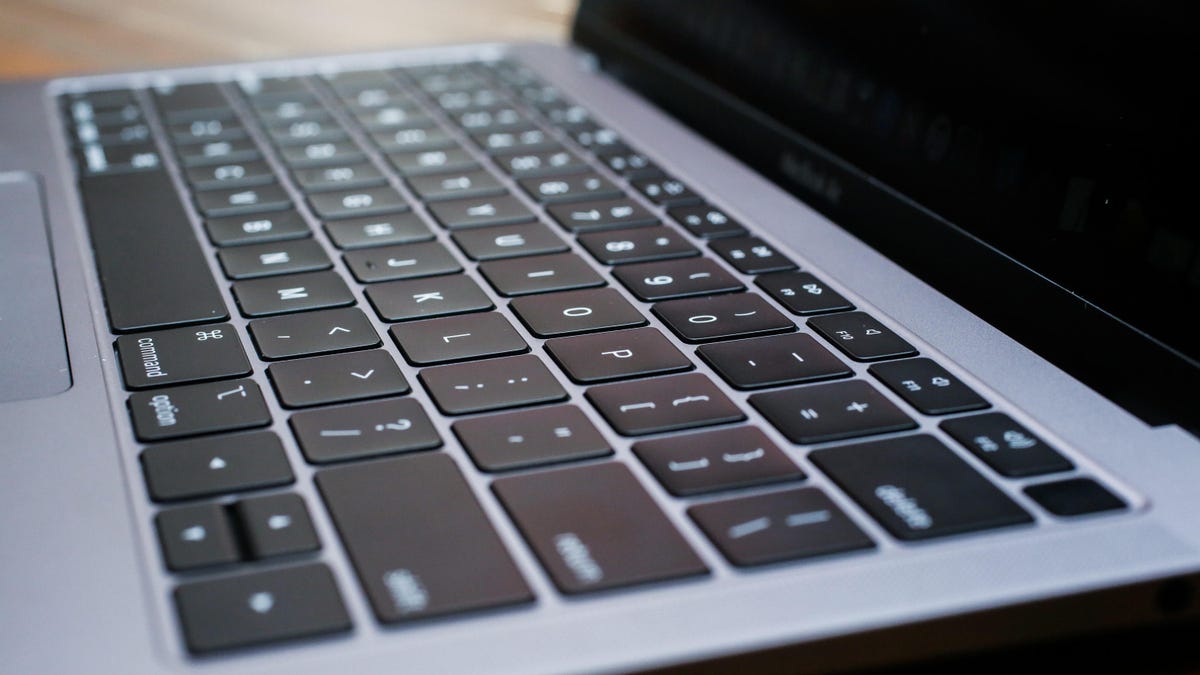In defense of the Apple MacBook keyboard
Well, defense may be a strong word. But it's not as bad as the internet would have you think.

I come not to bury the MacBook keyboard, nor to praise it.
The super flat keyboard on current MacBooks is one of our favorite things to hate. It ranks right up there with millennials ordering avocado toast, DC Universe movies and robocalls as fair game for everyone to knock.
And that's not without reason. The design, which slims down a standard keyboard by laying the keycap over a low-profile "butterfly" mechanism with less travel, is not necessarily an improvement over what came before.
But the sheer level of MacBook keyboard hysteria overstates the case. Like all computer horror stories, the evidence is largely anecdotal (except for all the lawsuits) and is magnified by the fact that people simply don't take to Twitter to report that their product is working as expected.
My longtime friend and industry colleague Joanna Stern has written a brilliant first-person account of her MacBook Air keyboard issues for The Wall Street Journal. Her E and R keys didn't work, among other problems, and several other MacBook users reported similar faults. It's been an ongoing issue since this style was introduced in the 2015 12-inch MacBook.
An Apple spokesperson told her: "We are aware that a small number of users are having issues with their third-generation butterfly keyboard and for that we are sorry."
For what it's worth, here's my story.
I've personally used (and often reviewed) at least eight different MacBooks with butterfly keyboards over the past four years. There's at least one in almost constant rotation in my laptop lineup at any given time. I've used this style of keyboard almost daily for the past four years.
After all that time, and all that typing, my experience can be summed up as: "Not great, but not as bad as people say."
Is that a hedge on the big question of the ultimate value of MacBook keyboards? Sure it is. But like most things in life, this falls somewhere in the middle part of the bell curve. Not great, not terrible.
This is not to minimize the issues many, many people have had with MacBook keyboards. Repairs, returns and lost productivity are all extremely frustrating, and I'd probably reassign whoever decided this needed to the be the single keyboard design for every MacBook to sweeping up an Apple Store in Siberia.
My colleagues and I have covered the issue extensively, including here, here, here, here, here, here, here and here.
But my experience has been somewhat less traumatic. Here's my personal take:
- The worst version of this keyboard was the initial one in the 2015 12-inch MacBook. The keys felt flabby, like they had no bounce.
- The best version is the mid-2018 update, which put a rubber membrane under the keys. Yes, this was said to be for keeping tiny dust particles and debris out of the keyboard, but it also added a little bit of much-needed bounceback to keystrokes.
- Even later versions of the 12-inch MacBook got much better. I literally wrote most of a 75,000-word book in coffee shops on a couple of different 12-inch MacBooks. Was it the greatest long-form typing experience ever? No. But it didn't derail me, either.
- I've had a handful of instances of keys getting stuck. But for me, the issue usually resolved itself by banging on the key a few times. Not scientific, but effective.
- I did have one more serious issue with seemingly dead keys. But there I followed CNET's advice involving inverted angles, compressed air and fingernails, and it worked. I can't say it'll do the same for you, but in my worst case of stuck MacBook keys, it did the trick.
My goal here is not to change any hearts or minds about MacBook keyboards. In truth, it's not a great triumph of keyboard design, and probably came from the ongoing arms race towards thinner, lighter laptops. Maybe my goal is just to provide a little perspective.
Bigger batteries and bigger keys mean bigger and heavier laptops. Thinner laptops mean less room for deep keys and less room for large batteries.
Sometimes, you just have to pick your poison.

